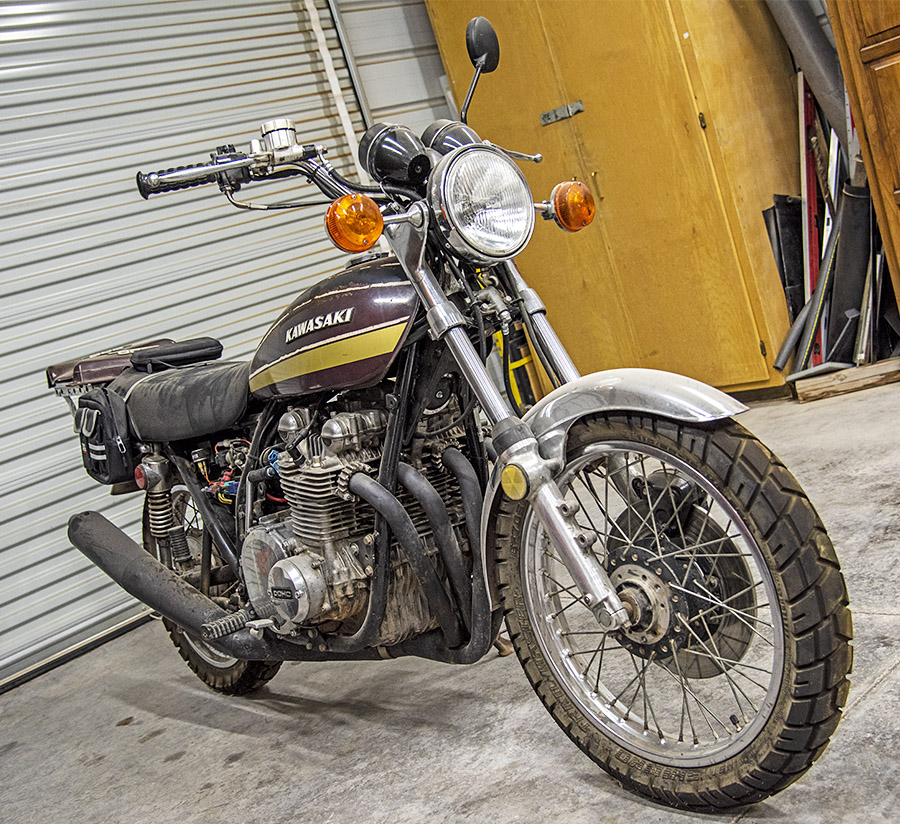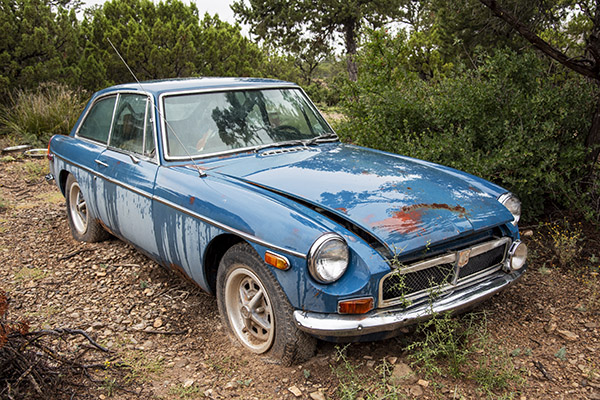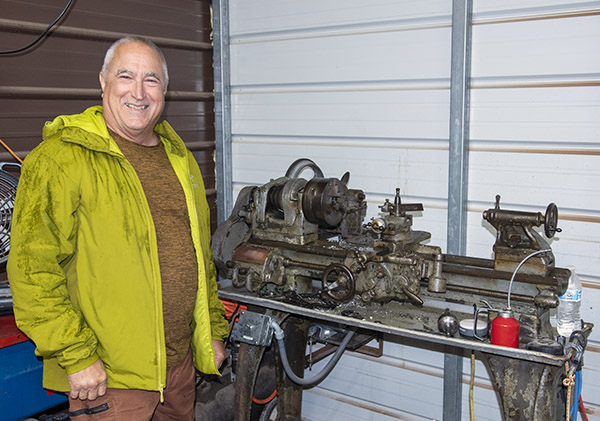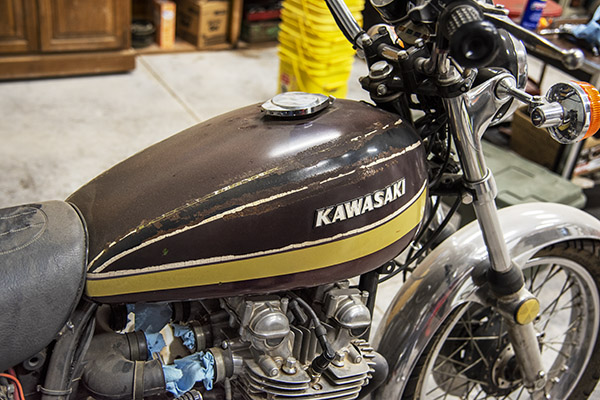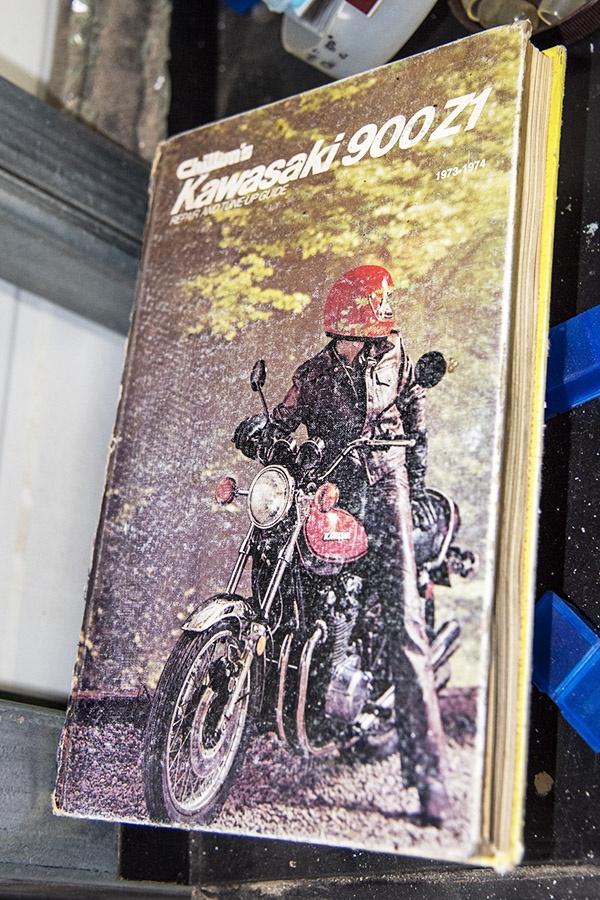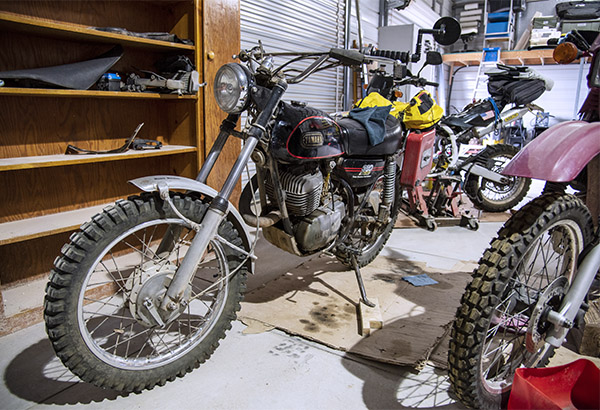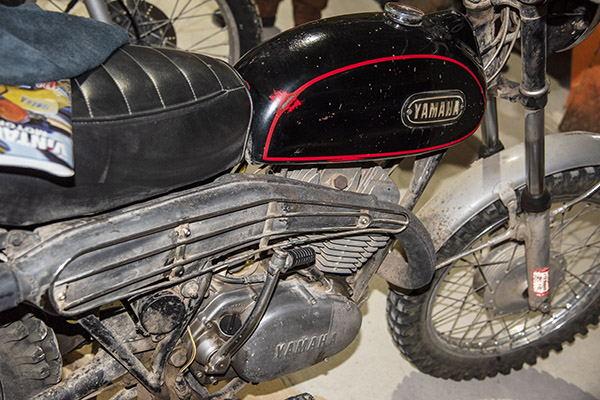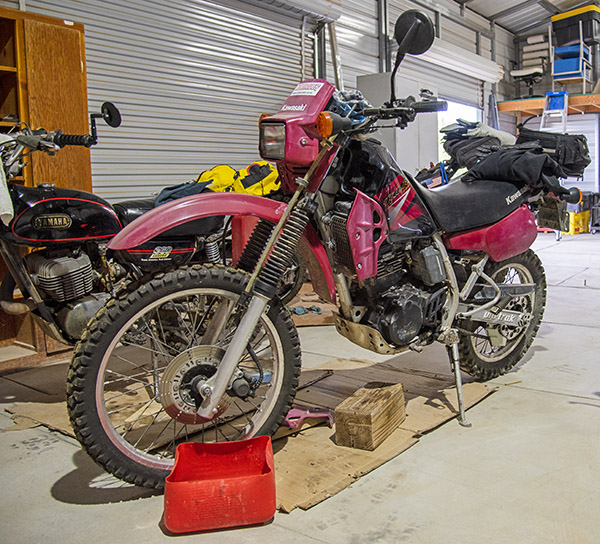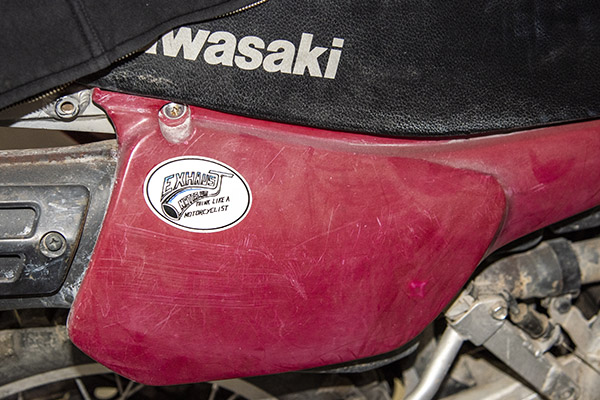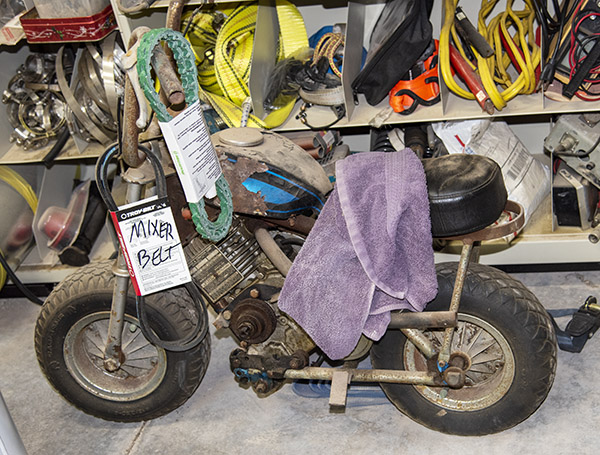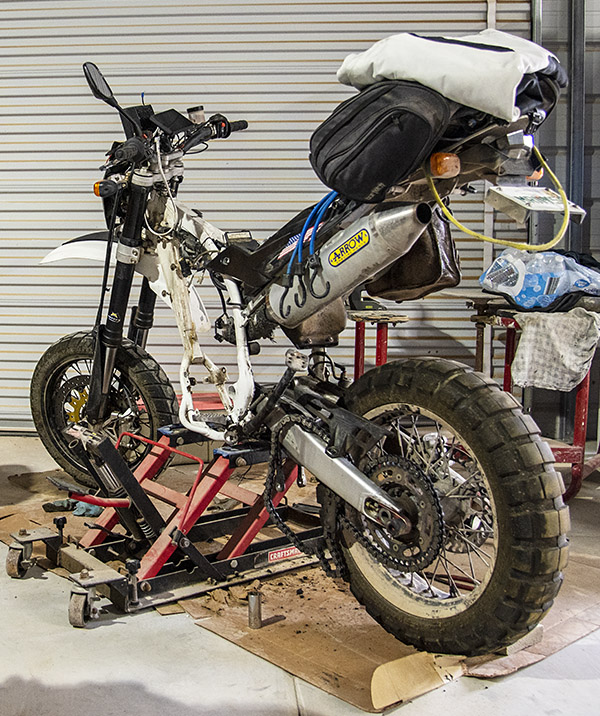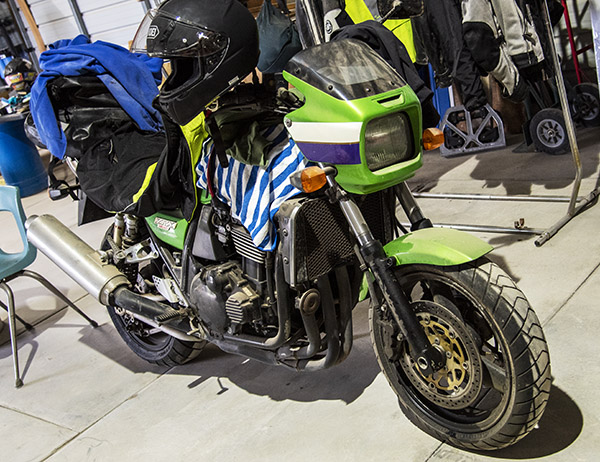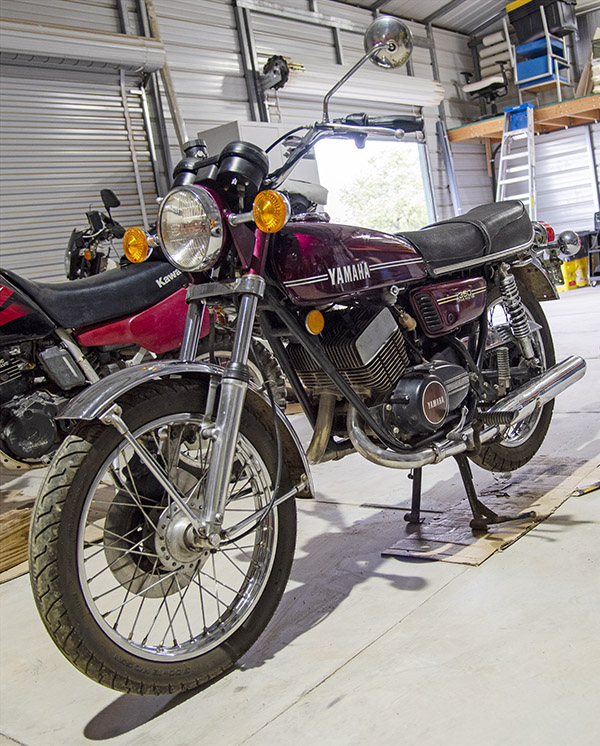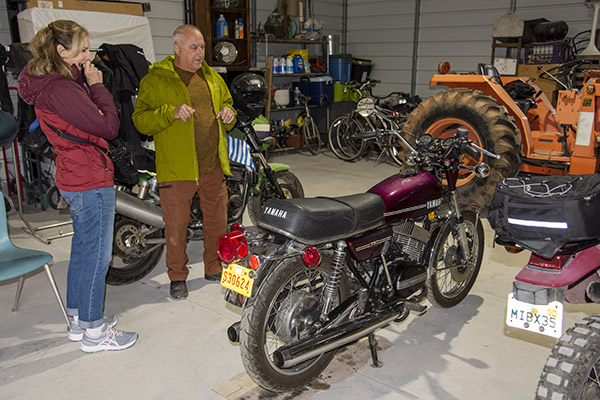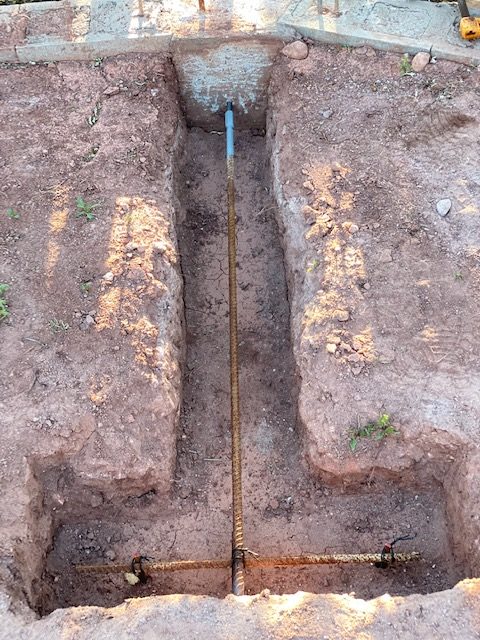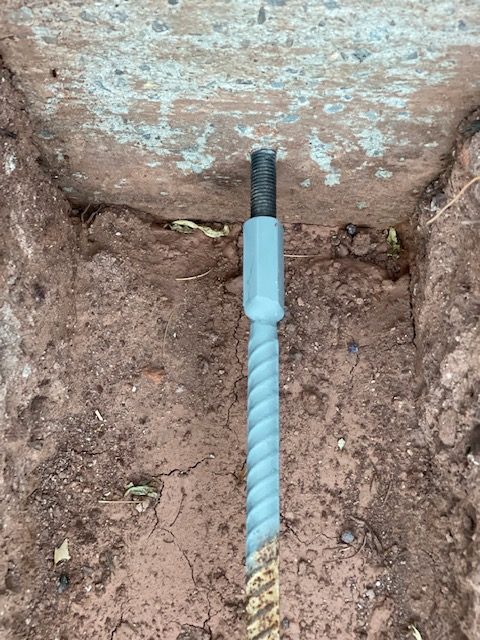By Joe Gresh
ExhaustNotes readers may think I pour a lot of concrete but that’s not really true. I do pour concrete frequently but only a little at a time. My limiting factor is how much total work I can get done in one day. That number dwindles as I grow older. I pour 30 to 40 60-pound bags of 4000 psi concrete on average. Any more and I start to have problems keeping up the finish work and any less is not worth getting the tools dirty. Cleanup takes a lot of time and if you don’t wash everything each time your tools become encrusted with dried concrete. It’s never fun to work with heavy, dirty tools.

Take my latest project, the driveway in front of the little shack we call The Carriage House. In an attempt to class up the place I am removing the existing driveway, which consisted of remnants of old rugs thrown over dirt. We acquired the rugs from a Physical Therapy training center. The PT rugs were in great condition and very sturdily constructed. Best of all they were free. The rugs served us well for many years by adding a semi-pervious layer between our feet and the dirt below. Engineered earth is the technical term, I think, for fabric-supported fill.
Of course, old rugs aren’t the most perfect solution for driveways or everyone would be using them. You’d see them in Beverly Hills or New York City, not just in poverty stricken rural areas. After several years the rugs become impregnated with dirt and are impossible to vacuum, much less shampoo. Being semi-pervious you still get mud underneath the rug although you don’t sink in as far as you would if going bare earth.
For this driveway I’m using a decorative finishing method called No Need To Square. No Need To Square means just that: the concrete is formed and finished in a random pattern giving the illusion of being made from many individual pavers. No Need To Square frees the concrete from The Man’s rigid, conformist hierarchy. It allows the finisher to follow the jagged contours found in the crystalline structure of cast Iron like you see in those electron-microscope photographs. The only constant is the slope that steers water runoff towards the drainage ditch running alongside The Carriage House.

Just as a cubist must master fine arts before experimenting with abstract art, the concrete finisher must master the square before leaving it far behind. Unfortunately, I am neither an artist nor a concrete finisher so things can go pear shaped quickly if you don’t mind your grades.


I’ve purchased a new tool for this driveway project: a belt-mounted tie wire spool. Tie wire is used to tie rebar together so that it doesn’t shift position when the concrete pours into the form or clumsy finishers kick it around when striking off. I owned a spool many years ago when I was a construction worker. My old one was more open, like a cage. You could see the wire in the spool, unlike this new one. I don’t know what happened to that old spool.
You’d think as often as I do little concrete pours I would have bought a wire spool sooner and I would have except for the price. The things are like $47 at Home Depot for an off-brand spool. I found a Klein brand spool on Amazon for only a dollar more than the clone version at HD. I’ve seen cheaper, plastic versions and they probably work fine.

There are basically two types of ties for re-bar: the saddle for tying re-bars that cross at right angles and the plain old loop for tying straight pieces together. I like to make up a bunch of each type before starting to tie. Real iron workers make up saddles and loops as they go so because it’s faster and they don’t have to carry a bunch of little, pre-made bits. I’m never in a hurry. Sitting in a chair with New Mexico’s warm, winter sun shining down on me gives the pre-tying process a sort of Zen-like quality. Sometimes I fall into a trance and end up making 600 of the things.
If you’ve tied much wire you know how easily an unspooled roll of wire can unwind and get tangled up. Pulling wire from the center results in a pig’s tail that you need to straighten out before using. I always double up my wires, as a single strand is easy to break when twisting the rebar tight. The doubling method uses twice as much wire but it makes for a secure grid of rebar. It’s also easy to get stabbed with tie wire and the spool allows you to wind it back inside for the safety of everyone involved on the project.
I’m going to tackle the driveway in two parts: the southern and northern wings. I’ll do the southern (higher) side first. That will give CT somewhere to park while I work on the northern (lower) section. I expect to be working on the southern section for a month or so before the weather gets too cold and I take a break and go back to tying up loose ends on motorcycles.


